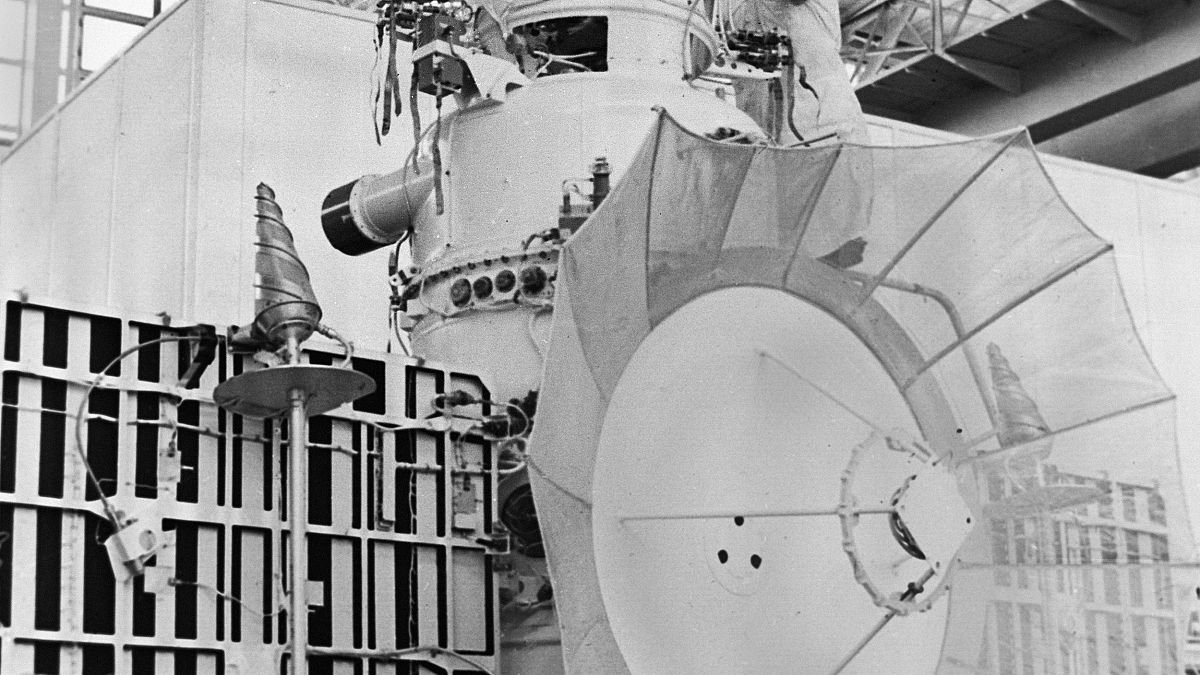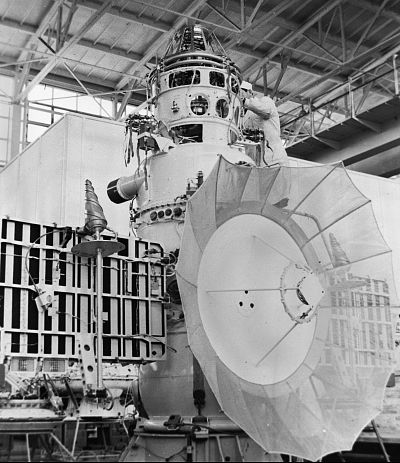Experts aren't sure exactly where Kosmos 482 will fall — or when.
When the Kosmos 482 space probe launched from Kazakhstan in 1972, Leonid Brezhnev was in the Kremlin and the Soviet Union was vying with the U.S. for supremacy in space.
Five decades later, the Soviet Union and its ambitious space program are no more. But the robotic spacecraft, now badly damaged, is still orbiting Earth. And experts agree that it's about to fall to the planet's surface — with a slight chance that it might cause damage or injuries when it does.
When will the craft come down? One news outlet quoted an expert saying it might fall this year or in early 2020. Other experts give a different timetable. "I am pretty confident in saying at least the early 2020s, and I wouldn't be surprised if it were the late 2020s," said Jonathan McDowell of the Harvard-Smithsonian Center for Astrophysics.
"Every time it goes around the Earth, it loses a little bit of speed and doesn't go up as high next time," he added. With each orbit, the drag from Earth's thin upper atmosphere shaves a tiny bit of speed from the probe: "Eventually, the orbit will become too low."
Falling Soviet spacecraft
Russian space historian Pavel Shubin agrees that Kosmos 482 is likely to survive in orbit for a few more years. "I did an assessment last year, and I've got that it can fly quite a long time," he said in an email, pegging the reentry to sometime around 2026.
Kosmos 482's high orbital speed — about 17,000 miles an hour — makes it impossible to predict just where the probe will come down. But McDowell said it's likely to plunge into the ocean or strike unoccupied land within about 4,000 miles either side of the equator — an area that covers more than half of Earth's surface.
Space
Most space debris that reenters Earth's atmosphere burns up before reaching Earth's surface. But Kosmos 482, which carries a lander designed to survive the corrosive atmosphere and metal-melting temperatures of Venus, is made from sterner stuff than most space junk. That means at least parts of the probe are likely to survive the fall to Earth.
Failed Venus mission
Kosmos 482 was a "failed sister mission" of the Soviet Venera 8 Venus probe, which launched from Kazakhstan a few days before it, according to Don Mitchell, a space historian in Redmond, Washington.
Venara 8 made the first successful landing on another planet in July 1972, sending back data on the Venusian atmosphere and landscape for 50 minutes before it succumbed to the extreme conditions.
But Kosmos 482 suffered a rocket failure as it boosted toward Venus, and wound up in a highly elliptical orbit around Earth. In the 1970s, the spacecraft's highest point was more than 5,000 miles above Earth; now its highest point is just 1,200 miles. And on each two-hour orbit, Kosmos 482 swings to about 130 miles from Earth's surface.
Space junk danger
Parts of the stricken Kosmos 482 spacecraft have already hit Earth: spherical titanium tanks fell on a farm in New Zealand a few weeks after its launch. Cyrillic lettering showed the "space balls" were Russian, but the secretive Soviets never acknowledged that they were responsible.
Dutch astronomer Ralph Vandebergh photographed Kosmos 482 in orbit in 2011 and 2014. He said its irregular shape suggested that the spacecraft had been damaged by a rocket explosion.
Over the years, there have been several scares over falling space debris — including China's Tiangong-1 space station, which last year crashed into the Pacific Ocean. But only one person is known to have been hit by falling space junk. Lottie Williams of Tulsa, Oklahoma, was struck on the shoulder by a six-inch piece of a rocket in 1997, but she survived the encounter with no injuries.

